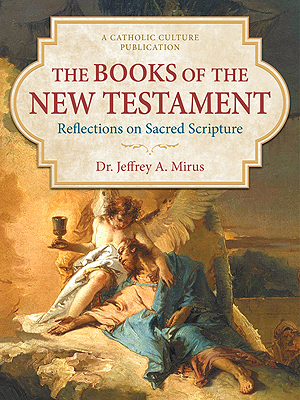Women Know How to Show the Tender Face of God
by Pope Francis
The topic that you chose is very close to my heart and already, on different occasions, I have been able to touch upon it and invite to further develop it. It consists of studying new criteria and ways, so that women feel not as guests, but as full participants in the various areas of social and ecclesial life. This is a challenge that can no longer be postponed. I say to the leaders of the Christian communities here, representing the universal Church, but also to laywomen and laymen, engaged in different ways in culture, education, economics, politics, the world of work, families, religious institutions. ...
The first theme is: Between equality and difference: seeking a balance. This aspect should not be approached ideologically, because the "lens" of ideology impedes one from seeing reality well. The equality and difference of women–like men–are perceived better from the perspective of “with”, of relationship, than “against”. For some time, we have left behind us, at least in Western societies, the model of the social subordination of women to men, a secular model which, however, has never been spent of all its negative effects.
We have also overcome a second model, that of mere equality, applied mechanically, and of absolute equality. A new paradigm was configured, that of reciprocity and in equivalence and in difference. The man-woman relationship, therefore, should recognize that both are necessary in that they possess, yes, an identical nature, but with their own modality. One is necessary to the other, and vice versa, so as to truly fulfill the fullness of the person.
The second theme: "Generativity" as symbolic code. This turns an intense look to all mothers, and widens the horizon to the transmission and to the protection of life, not limited to the biological sphere, which we could synthesize with four verbs: desire, give birth to, take care of and let go.
In this context, I have in mind and I encourage the contribution of many women who work in the family, in the field of faith education, in pastoral activity, in education, but also in social, cultural and economic structures. You, women, know how to show the tender face of God, his mercy, which translates in the availability to give time more than to occupy spaces, to welcome rather than to exclude. In this sense, I like to describe the feminine dimension of the Church as a welcoming womb that regenerates life.
The third theme: The female body, between culture and biology, recalls for us the beauty and harmony of the body that God has given to women, but also the painful wounds inflicted, sometimes with brutal violence, to them as women. Symbol of life, the female body is, unfortunately, not infrequently, attacked and disfigured, even by those who should be guardians and companions in life.
The many forms of slavery, of commodification, of mutilation of women's bodies, oblige us therefore to work to defeat this form of degradation, which reduces (a woman’s body) to a mere object to sell on various markets. I wish to draw attention, in this context, on the painful situation of so many poor women, forced to live in dangerous and exploitative conditions, relegated to the margins of society and made victims of a culture of waste.
The fourth theme: Women and religion: fleeing or seeking participation in the life of the Church? Here, believers are challenged in a special way. I am convinced of the urgency of offering spaces to women in the life of the Church and to welcome them, taking into account the specific and changing cultural and social sensitivities. Therefore, a more widespread and incisive female presence in the Community is desirable, so that we can see many women involved in pastoral responsibilities, in the accompaniment of persons, families and groups, as well as in theological reflection.
We cannot forget the irreplaceable role of women in the family. The qualities of gentleness, of particular sensitivity and tenderness, which is abundant in the female soul, represent not only a genuine force for the life of families, for the irradiation of a climate of peace and harmony, but also a reality without which the human vocation would be unfeasible.
It is, furthermore, to encourage and to promote the effective presence of women in many areas of the public sphere, in the world of work and in places where the most important decisions are taken, and at the same time to uphold their presence and preferential attention, altogether special, in and for the family. We must not leave women alone to carry this burden and to make decisions. Rather, all institutions, including the ecclesial community, are called to ensure freedom of choice for women, so that they have the possibility to take on social and ecclesial responsibilities in a way that is in harmony with family life.
© Libreria Editrice Vaticana 2015
This item 10822 digitally provided courtesy of CatholicCulture.org







